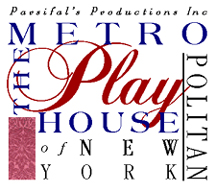
Metropolitan Playhouse
The American Legacy
The American Legacy
220 East Fourth Street ~ New York, New
York 10009
(212) 995 8410
(212) 995 8410


 |
Metropolitan Playhouse
The American Legacy 220 East Fourth Street ~ New York, New
York 10009
(212) 995 8410 |
  |
|||||||
| Playing | Next | Season | Tickets | Company | Location | Mission | History | Links |
|
| Historical and Cultural Context Read on to learn more about the people, institutions, and events that shape the experiences of the characters in A Marriage Contract. |
||
| From the
script: |
From the history books: | |
| "1892" | 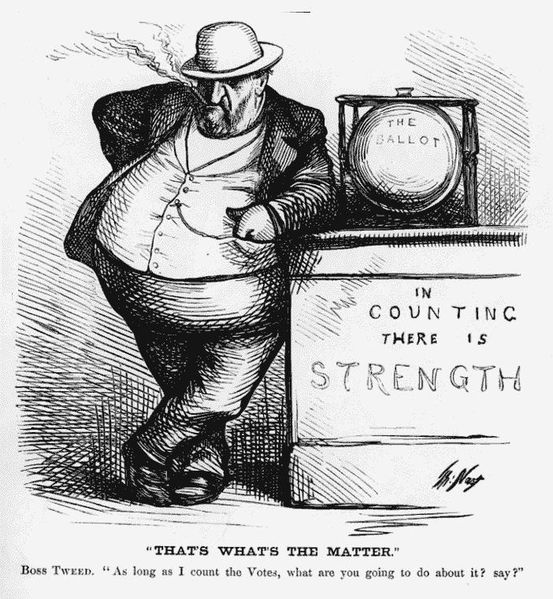 Plutocrats and corrupt officials, like Boss Tweed, presided in the Gilded Age. |
In 1892
America was in the waning days of the
Gilded Age. A boom in technology and
industrialization had created enormous wealth, and
considerable public corruption, and lead to growing urban
populations. Tensions that would explode in the Progressive
Era began to make themselves known. As ever, changes in
daily life seemed to herald a shift in cultural values. |
| "Acts 1 and 4 occur in the Metropolis" |
The Bowery, 1896. From the New York Times archive. |
New
York did not yet include Brooklyn, Queens, or much
of the Bronx, and was home to around
1.5 million people, making it the biggest city in
the nation by 50%. Tammany Hall Democrats, including Mayor
Hugh J. Grant, ran the political offices. |
| Pognip and Ned claim they
went "to the Grolier Club to
see the old bindings...Old Grolier
was there himself." |
 The chief attraction of The Grolier Club was old books. |
The
Grolier Club is a private association of bibliophiles and
book collectors on 60th Street, and its main
attraction was old, rare books. Though it was only eight
years old in 1892, its namesake was Jean Grolier de
Servières, viscount d'Aguisy who had been dead since 1565.
So there's little chance Pognip would have run into him. The Club itself,
however, is still around. |
| But they really went to "the Jolly Frollickers..." |
 The chief attraction of the "Jolly Frollickers" was probably something else entirely. |
The
Jolly Frollickers is a fictional company, but Daly
evokes the kind of 1890s entertainment that would have
included vaudeville, minstrelsy, and
burlesque shows. Certainly, this kind of
titillation was unavailable in a place like East Lemons. |
| "...in the Madison Square Garden." |
 An advertisement for the new Madison Square Garden. |
This Madison
Square Garden is the second building to bear that name,
located on 16th and Broadway, just south of Madison Square.
Pognip would have seen a very new building, financed by J.P.
Morgan, Andrew Carnegie and others in 1890 to replace the
first, open-air MSG. It hosted sports, theater, conventions,
and all manner of entertainment. |
| "Do you know where
my flat is?—Broadway and Twenty-third
Street, right in the midst of the
noisiest—gayest—brightest—maddest crowd on the continent." |
 Fleming has chosen a lively part of town. |
Fleming himself lives right
on Madison Square Park, and
he's not lying as he brags about its flair. Madison Square
and the surrounding neighborhood was one
of the most fashionable commercial and social centers
in the city. |
| Fleming is "an architect." |
 Grand Central Terminal, in the Beaux-Arts style |
An architect would have been in high
demand in the growing city-- and considerably less so in
sleepy East Lemons. The turn of the 20th century was a
fertile time for new buildings in New York, especially when
the 1893 World's Fair introduced America to the Beaux-Arts
style that would give us the Metropolitan Museum, the main
branch of the New York Public Library, Grand Central
Terminal (left) and more. |
| "I leave for New York by the six o'clock train." | 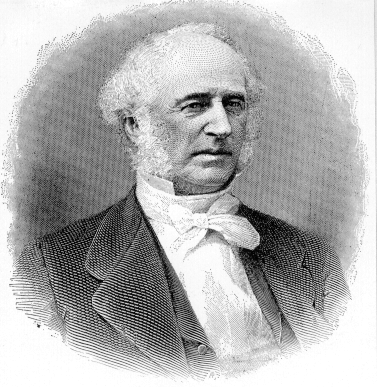 Cornelius Vanderbilt had made a fortune on the railroad. |
Train travel between Newark and suburban New Jersey was established as early as 1835, and by the 1890s rail was becoming a viable option for travelers, at least in the industrial Northeast. Elsewhere, the railroads had allowed industrialists like Cornelius Vanderbilt to build massive commercial empires. |
| "I've been to the ferry every day." |
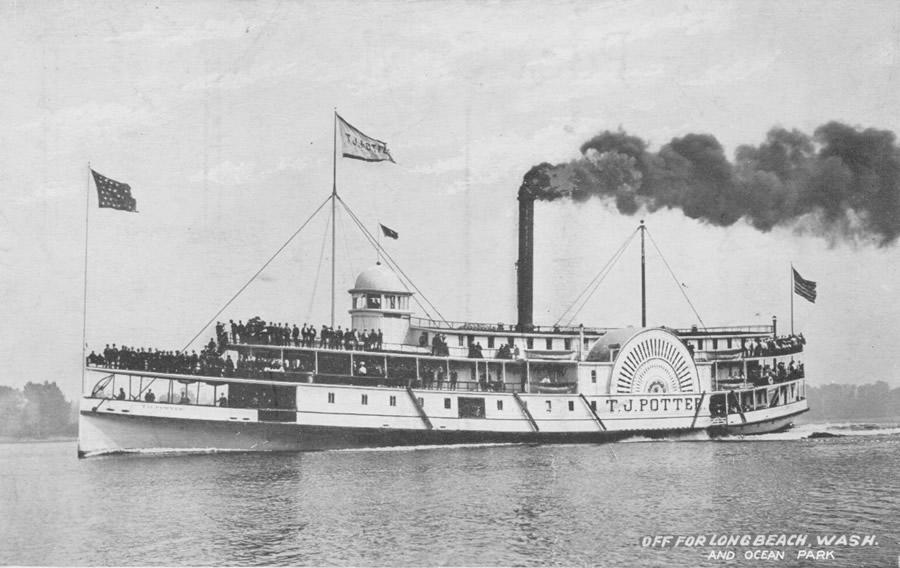 Steamboat ferries would take travelers across the Hudson. |
Travelers still had to take
a ferry across the Hudson,
however, as the North River Tunnels connecting Weehawken to
Manhattan would not be constructed until 1907. |
| "Acts 2 and 3 eventuate in East Lemons" |
 The corner of Main and
Prospect Streets in East Orange, NJ circa 1890.
|
Daly's citrus-named suburb would seem to be a fictionalized version of East Orange, NJ. Only a scant 15 miles away from Fleming's apartment, East Orange had a population of about 13,000 in 1890. |
| FLEMING: "To East Lemons?
To that hole?" POGNIP: "My suburban residence—a hole?" |
 Fleming embraces New York exceptionalism. |
The word "suburb" can be traced as far back
as the 14th century, but by the early 19th century it had
taken on the connotation of having "inferior
manners and narrow views." Though Daly is still
fifty-some years off from the post-war white flight
interstate development that will create a boom in suburban
American life, Fleming's antipathy towards suburban New
Jersey is recognizably a New Yorker's attitude. |
"They don't give us Ibsen in East Lemons." |
 Don't be fooled by the mutton chops. Henrik Ibsen's realism struck at the heart of Victorian morality. |
Norwegian Henrik Ibsen was a major playwright and theater director whose plays broke new grounds of realism and scandalized Victorian morality. His Ghosts premiered in Chicago and shocked audiences with blunt discussion of venereal disease and marital infidelity. Pognip would no doubt blanch. Ibsen was a significant influence on Daly. |
| "Professor Merrywell,
president of our Browning Club—a
poet of the Browning school, himself." |
 Robert Browning was an exemplar of Victorian literature. |
Englishman Robert Browning published poems
from 1833 until his death in 1889. He was enormously
influential, and Daly's audience would have recognized him
as the preeminent exemplar of
Victorian literature. Browning societies, small
groups that would gather to discuss his work, existed in
great numbers through the US and the UK. |
| "Oh, yes; I've read Zola." |
 Émile Zola was a controversial and forward thinking novelist. |
Frenchman Émile Zola published his first
novel in 1865 and was consistently devoted to naturalism.
Dr. Tinkey and Fleming's shared reference to Zola's Germinal
indicates a familiarity with forward looking literature
that sought an honest representation
of the human condition. |
| TINKEY: Well, what's
the latest? NATTY: Why, "Ta-ra-ra, Boom-de-ay." |
 An advertisement for Tuxedo, from the Library of Congress. |
The familiar refrain "Ta-ra-ra Boom-de-ay" originated from the
vaudeville show Tuxedo, which opened in New
York in late 1891. Its suggestive lyrics and can-can style
dance made the song an immediate and slightly salacious hit.
|
| "Your
tin plate factory is the most prosperous in
America!" |
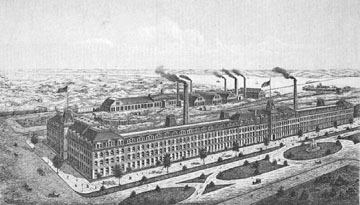 North Jersey was home to many factories. |
Though tin had previously been largely
imported from the United Kingdom, an 1891 protectionist
tariff created a major opportunity for American
manufacturers like Pognip. North Jersey had long been the
site of industrial production. |
"Yes, Columbia, me." |
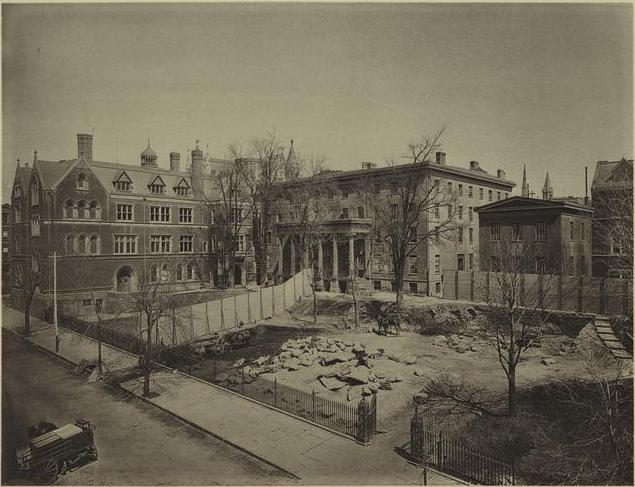 Columbia's midtown campus in 1882. |
In 1892, Dr. Tinkey's alma mater was still called Columbia College and located at 49th and Madison. It would not move to Morningside Heights until 1897. Nonetheless, as the alma mater of men such as John Jay and Alexander Hamilton, its reputation was sterling even then. |